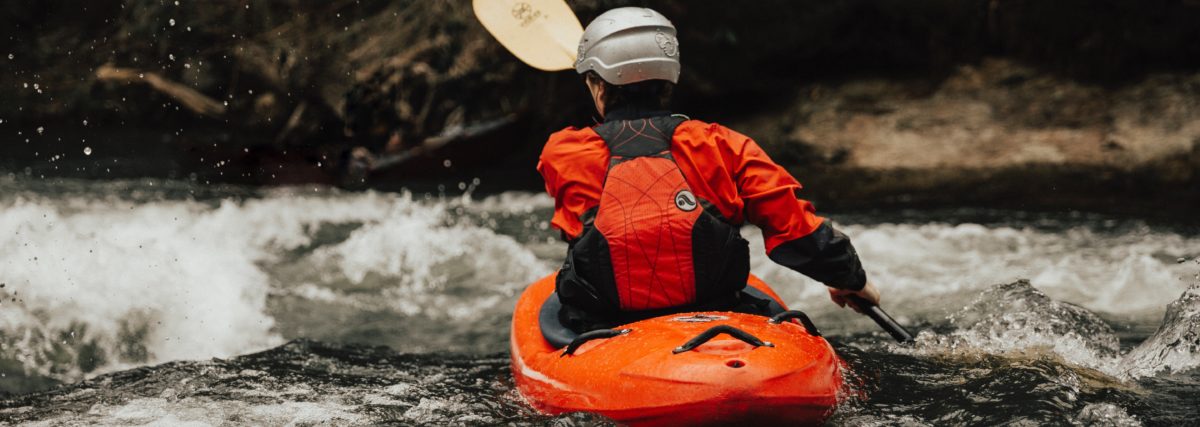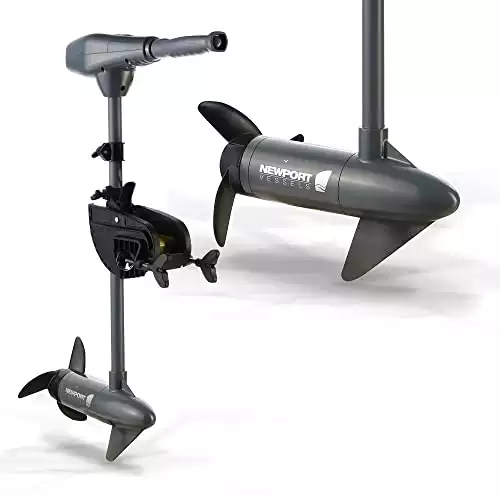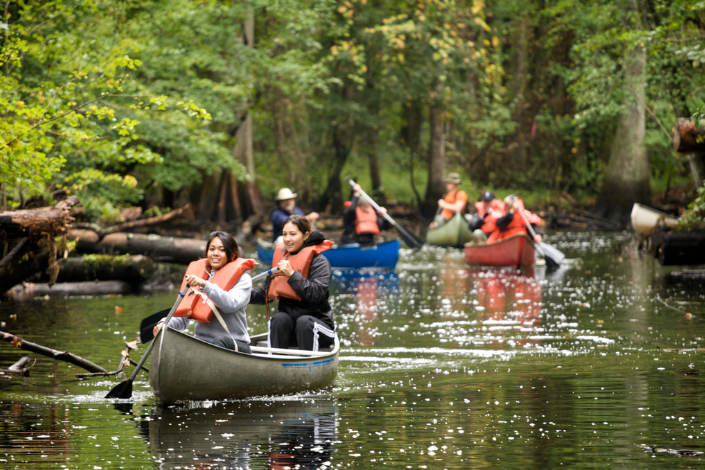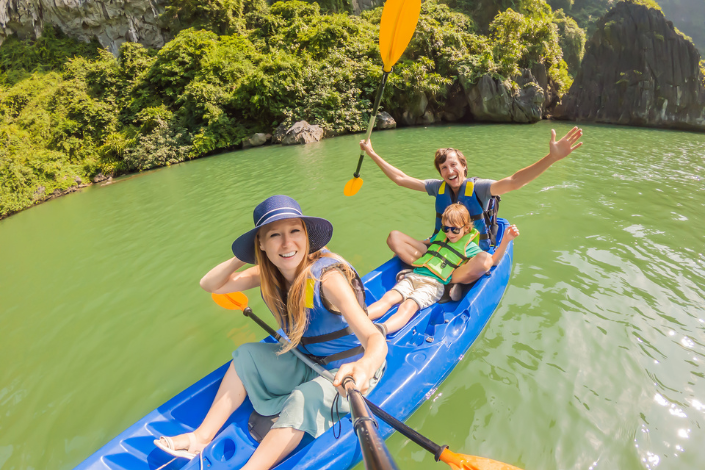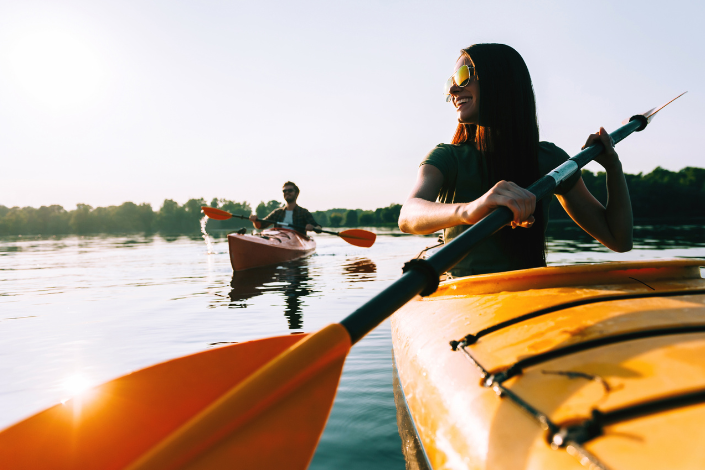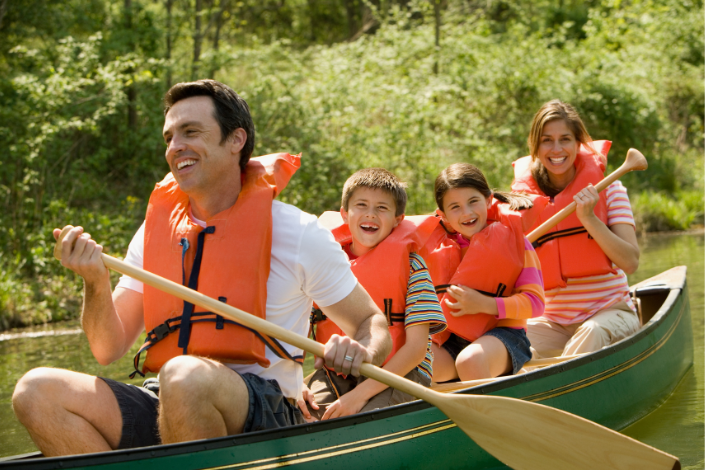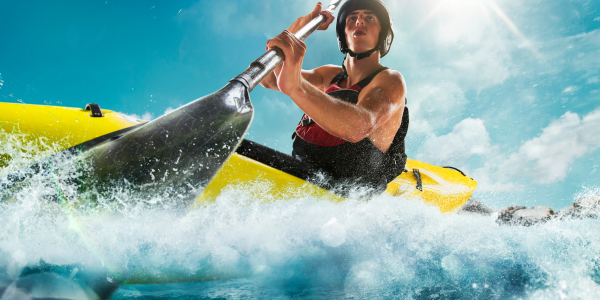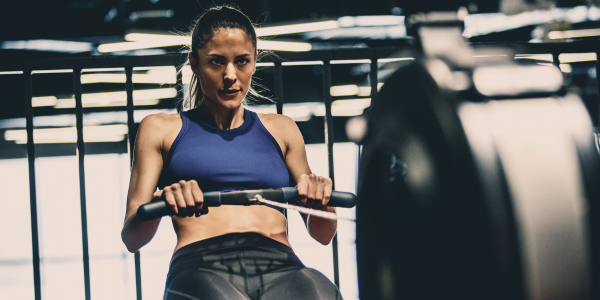Kayaking is one of those serene activities that you crave. It’s perfect for those of us who enjoy the water and want to explore new areas…but if you want to move a little faster in your kayak, then get ready to be delighted.
Sometimes, kayakers will find themselves in situations where they will need a boost or extra help to get where they need to go. That’s where trolling motors come in. In fact, the first time I heard of this possibility, my jaw dropped. But let me slow down and let’s tackle the question:
Can You Mount a Trolling Motor on a Kayak?
The short answer is, yes, you can put a trolling motor on a kayak!
One of the most reviewed and loved trolling motor options out there! Pick the bundle with the Min Kotta C2 30 + battery box for no fuss and a great price. Editor's top pick.
However, before you set out to do this, there are a few things you need to consider. First, you need to understand that a trolling motor is a propulsion system designed for larger boats and it can be a little challenging to mount it on a kayak.
Second, you should also think about the effect it will have on the kayak’s maneuverability and speed. With that being said, if you do still want to put a trolling motor on your kayak, then I’ve got the hookup for ya.
How to Mount a Trolling Mother on a Kayak
Putting a trolling motor on your kayak isn’t complicated. It comes down to choosing the right motor and battery for it and then mounting it well. Here we go:
#1. Choose the right motor
When choosing a trolling motor for your kayak, you need to consider its weight, size, and power. You do not want to choose a motor that is too heavy for your kayak and affects its stability and speed.
This is an important tip because it affects your safety. A motor with a power range of 30-55 pounds is ideal since it’s lightweight and compatible with most kayaks.
#2. Choose the right battery
Your trolling motor will need a battery to run. You need to choose the right battery: one that’s not too bulky and can fit easily into your kayak.
A rechargeable battery with 12 volts and 30-60 amperes is ideal.
#3. Mount the motor correctly
Once you have chosen the appropriate motor and battery, it’s time to mount it correctly on your kayak.
To do this, you can choose a DIY option and mount it on a mounting plate attached to your kayak’s stern. Alternatively, you can also use a kayak trolling motor mount that can bolt into the scupper holes on your kayak which is a bit easier than the DIY option!
#4. Practice operating the kayak with the motor
Now that you have mounted the trolling motor on your kayak, it’s time to test the living hell out of it and I mean that!
I cannot stress this enough: I made a rookie mistake the first time I mounted one of these puppies to my kayak and took it out for a serious kayaking trip. It wasn’t mounted well and my kayak tipped over. Luckily, my buddy helped me and it’s a happy ending. Just please do not skip this step.
Before you hit the water, make sure you have gotten the hang of operating the motor. Remember, it will take time to get familiar with operating the motor, so it’s important to practice on super-calm waters first.
Is a trolling motor safe to mount on a kayak?
Yes, a trolling motor is safe to mount on a kayak if you take proper precautions.
Another crowd favorite and a favorite among our staff! It comes with 8 variable speeds (5 forward and 3 reverse) and comes with a great price.
As directed above, make sure to choose the right motor, battery, and mount for your kayak and practice operating it in calm waters before you hit the open seas.
These motors have been on the market for quite some time and have become increasingly popular with kayakers. Personally, they’ve made my kayaking trips a 100% better.
Is it legal to put a them on a kayak?
The answer to this question depends on where you live. In some states, it is legal to mount a trolling motor on a kayak, while in others, certain restrictions may apply. You should check with your local laws before mounting one on your kayak.
Here are the states where it is legal to mount a trolling motor on your kayak:
- Alabama
- California
- Colorado
- Florida
- Georgia
- Hawaii
- Louisiana
- Mississippi
- New York
- North Carolina
- Oregon
- Tennessee
- Texas
How fast will a trolling motor push a kayak?
However, laws change all the time and while we keep this information updated, please check your local and state laws.
The speed of a trolling motor pushing a kayak depends on the size and power of the motor. Generally, small motors with 30-55 pounds of thrust can push most kayaks at speeds of about 3-5 mph. Larger motors with more than 55 pounds of thrust can reach speeds up to 7 mph. The weight and type of kayak, as well as the weight of the paddler and any gear they are carrying will also affect speed.
Do I need to register my fishing kayak with a trolling motor?
Again, this depends on the laws in your state. In some states, you are not required to register a fishing kayak with a trolling motor.
So, the rules can be a bit like a fishing net—tangled and varied. It depends on where you’re paddling and what state you’re in. In some places, you might be able to cruise along without a care, as non-motorized kayaks usually don’t need registration.
But hold on to your paddle! In other states, like California, they might have specific rules for kayaks with motors, including those fancy trolling motors.
To find out if your kayak needs registration, it’s best to reel in the most accurate information from the state’s boating or wildlife agency. They’re the ones who know the ins and outs of kayak registration like a seasoned angler knows their tackle box.
Also, don’t forget to check out any local rules or regulations, because you never know what surprises might be lurking in those fishing holes.
Many states require a special permit or license to operate a motorized vessel.
How fast will a 55lb trolling motor push a kayak?
A 55lb trolling motor can push a kayak at speeds of up to 7-10 mph depending on the weight and type of kayak as well as the weight of the paddler and any gear they are carrying.
Keep in mind that this is just a general estimate- actual speed may vary due to wind conditions, current, and other factors.
Conclusion
In conclusion, it’s possible to put a trolling motor on a kayak, but you need to do it safely and correctly. It’s important to choose the right motor and battery, mount it correctly, and practice operating the kayak with the motor.
With all these in place, you can enjoy a fun-filled day kayaking with the help of a trolling motor. Keep my story in mind as you don’t want a scary experience like the one I had the first time I took out my kayak with a motor!
